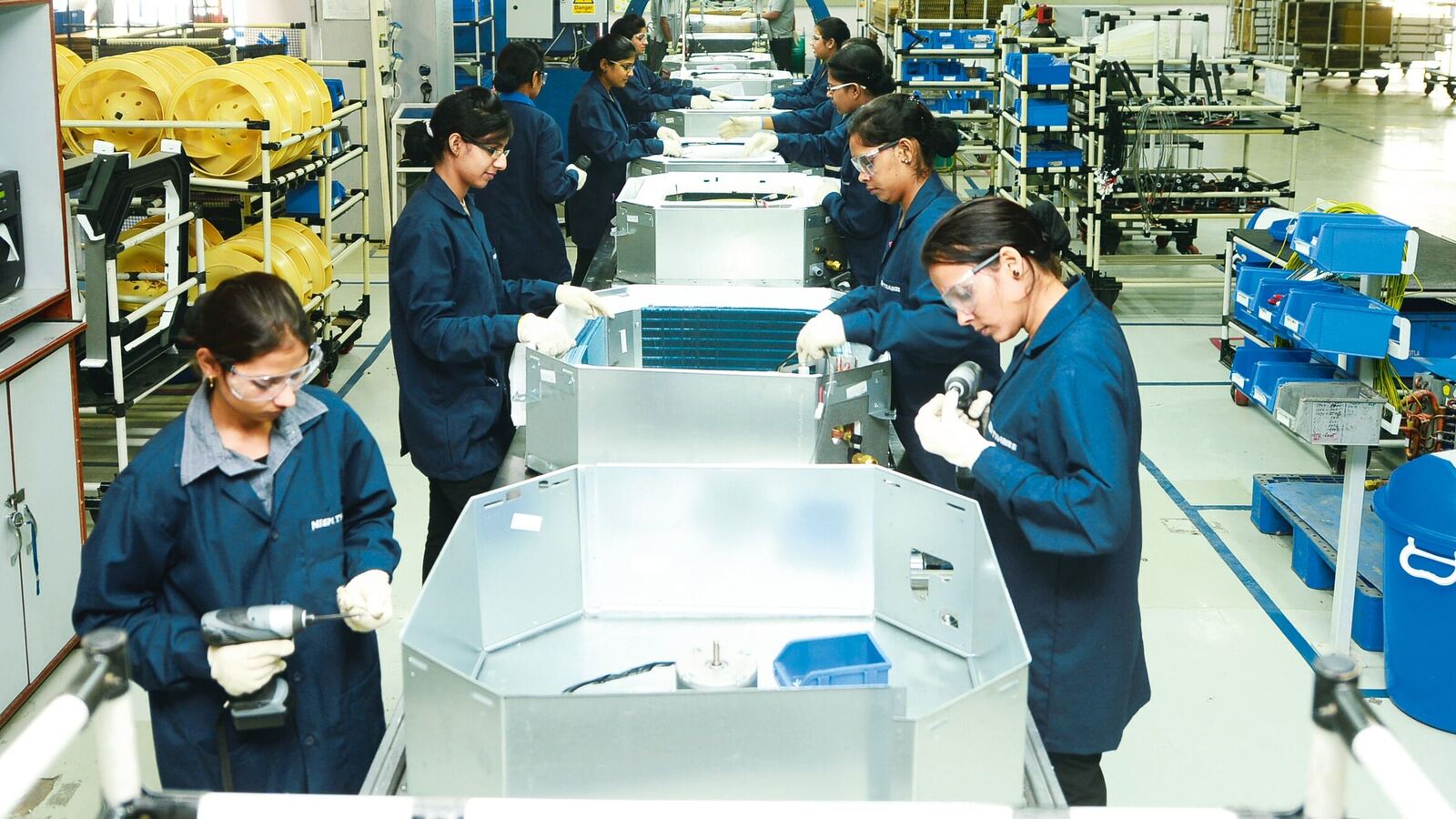We ask, what lies behind this growth? How large are these enterprises? Do they operate primarily in manufacturing or services? Are they concentrated in specific industries within these sectors?
Crucially, what are the constraints faced by women-owned enterprises, and how can we fully tap the potential of such enterprises?
Data from the Economic Census (EC) of India shows a steady increase in women-owned enterprises between 1998 and 2013, both in manufacturing and services. We observe sharp growth particularly between 2005 and 2013, even among firms that have more than 10 paid workers.
We combine data from older rounds (2010 and 2015) with the most recent rounds (2021, 2022 and 2023) of the unorganized sector enterprise survey, with the caveat that these primarily cover informal, unregistered enterprises.
Here too, we observe an upward trajectory of own-account enterprises and those with more than one worker in manufacturing and services both.
Within manufacturing, the increase in women-owned enterprises is mostly in select industries, namely tobacco, food and beverages, paper and chemicals; for services, the growth is led by sectors like education and other personal services.
The growth of women-led enterprises can drive economic development. By engaging more women in income-generating and productive activities, a substantial segment of the population—previously not actively participating in the economy—can be brought into the workforce.
This impact is amplified by the phenomenon of employment homophily, where individuals tend to hire others similar to themselves. For example, the 2013 EC reported that 65% of employees in women-owned businesses were women.
Therefore, encouraging women’s entrepreneurship could create more jobs for women, improving India’s overall women’s labour force participation.
The rise in women’s entrepreneurship is in tandem with recent financial inclusion initiatives by the government and Reserve Bank of India (RBI).
Following the launch of the Pradhan Mantri Jan Dhan Yojana (PMJDY) in 2014, India’s banking sector saw a steep rise in the share of bank accounts held by women. According to the ministry of finance (2024 data), 55.6% of PMJDY beneficiaries are women.
As for women entrepreneurs, the enterprises survey shows that the share of women owners with a bank account has gone up from 40% in 2015 to 61% in 2023. This has enabled credit access, increasing the share of loan accounts held by women.
Moreover, targeted schemes offered by banks under their Priority Sector Lending goals have also increased credit flow to women, particularly in rural areas.
The Pradhan Mantri MUDRA Yojana launched in 2015 also aims to ease credit constraints through collateral-free loans with flexible repayment tenures and concessional rates for women borrowers.
The share of MUDRA loan accounts held by women increased dramatically from about 18% in 2015 to 36% in 2024. Similarly, the female share of retail business loan accounts rose from 19.9% to 30.7%.
This trend is reflected in the enterprise data, where commercial banks, cooperative banks and government schemes account for up to a third of outstanding loans to women-owned enterprises in 2023.
Another constraint faced by women is their lack of property rights, which deprives them of collateral against which they can borrow.
Lakshmi Narayanan (2019) finds that amendments to India’s property-rights laws to ease women’s inheritance of property strengthened their rights and paved the way for more women entrepreneurs.
While targeted financial integration is expected to close gender gaps in credit access, social norms and lack of awareness contribute to gender disparities in entrepreneurship.
There is ample evidence that women are influenced by role models and peers, particularly other women in leadership positions, not just in developing countries but in developed ones as well. Given this, how do we bring more women into entrepreneurship?
The government has started the Women Entrepreneurship Platform to identify and mentor women entrepreneurs who want to start businesses and provide knowledge as well as hands-on support for doing so. There have been several initiatives in specific sectors to leverage this platform.
The steady rise in women’s entrepreneurship in India is a promising development, but significant challenges remain. While financial inclusion has opened new doors, deep-rooted social norms, limited property rights and weak support networks continue to constrain many women.
Credit access and training, though essential, are not sufficient on their own. A more holistic approach is needed, one that combines financial support with legal empowerment, mentorship, access to networks and sector-specific interventions. The Women Entrepreneurship Platform is a step in this direction.
As more women enter and sustain themselves in entrepreneurial roles, gender-disaggregated data and a careful evaluation of policy initiatives will also be critical.
Only through such an integrated strategy can we ensure that the gains made so far translate into a more inclusive and dynamic entrepreneurial ecosystem.
The authors are affiliated with the Centre for Advanced Financial Research and Learning (CAFRAL).
